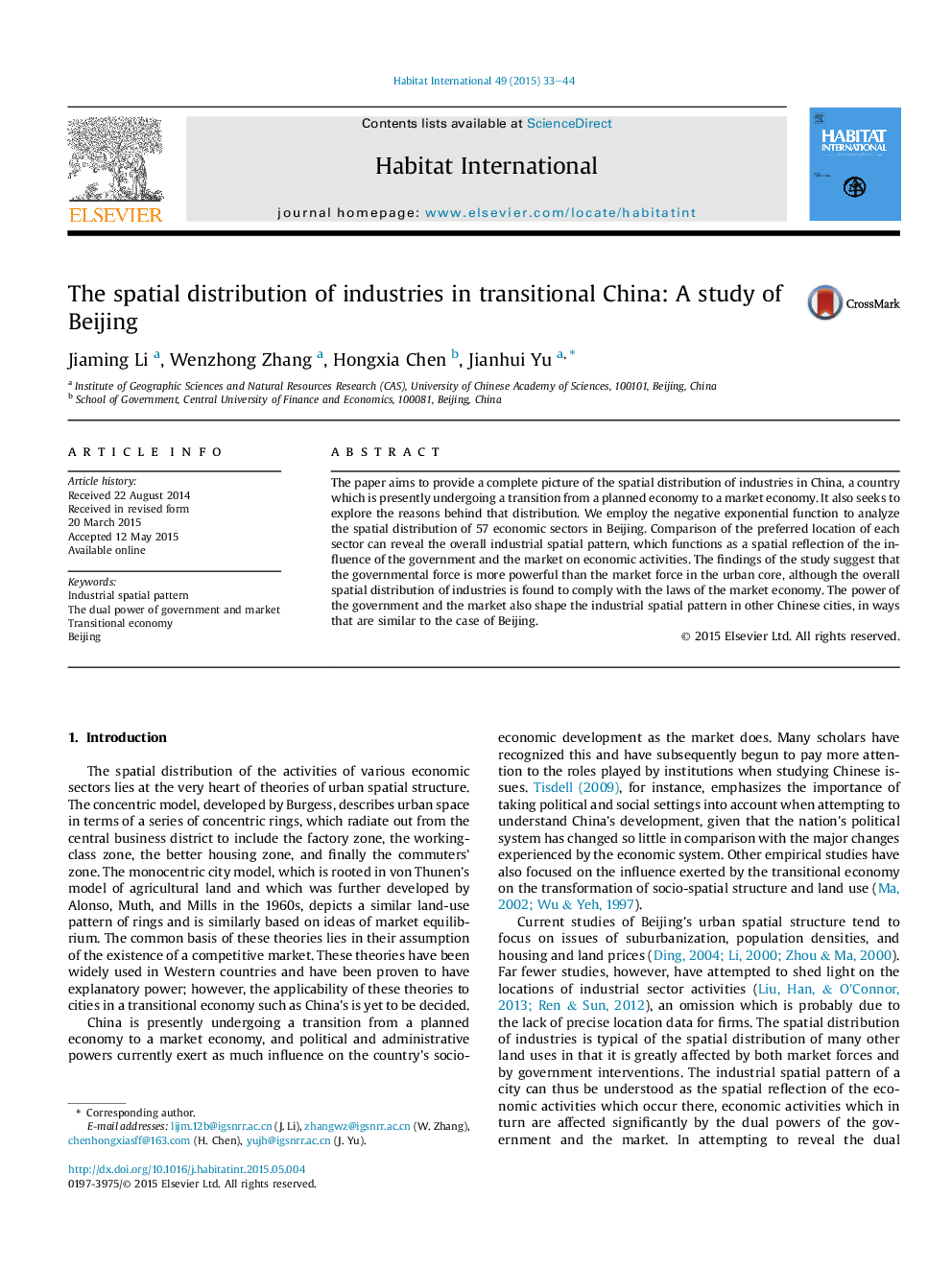| Article ID | Journal | Published Year | Pages | File Type |
|---|---|---|---|---|
| 7456049 | Habitat International | 2015 | 12 Pages |
Abstract
The paper aims to provide a complete picture of the spatial distribution of industries in China, a country which is presently undergoing a transition from a planned economy to a market economy. It also seeks to explore the reasons behind that distribution. We employ the negative exponential function to analyze the spatial distribution of 57 economic sectors in Beijing. Comparison of the preferred location of each sector can reveal the overall industrial spatial pattern, which functions as a spatial reflection of the influence of the government and the market on economic activities. The findings of the study suggest that the governmental force is more powerful than the market force in the urban core, although the overall spatial distribution of industries is found to comply with the laws of the market economy. The power of the government and the market also shape the industrial spatial pattern in other Chinese cities, in ways that are similar to the case of Beijing.
Keywords
Related Topics
Social Sciences and Humanities
Social Sciences
Development
Authors
Jiaming Li, Wenzhong Zhang, Hongxia Chen, Jianhui Yu,
